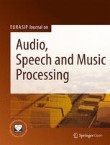Fast Noise Compensation and Adaptive Enhancement for Speech Separation
We propose a novel approach to improve adaptive decorrelation filtering- (ADF-) based speech source separation in diffuse noise. The effects of noise on system adaptation and separation outputs are handled sep...
